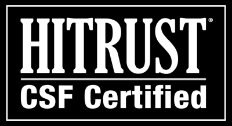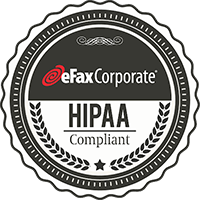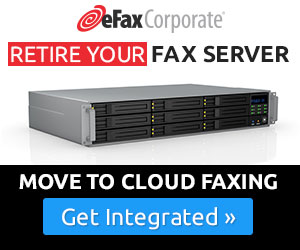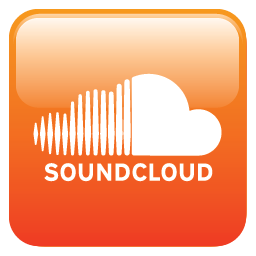Six self-assessment criteria for deciding
if it’s time to move to the Cloud
There is always a difficult tipping point when it comes to technology, when you have to forget about the large investment you made several years ago in a hardware device or software application and face the harsh reality that it has outlived its usefulness. I know it was difficult for me to put to rest my dual floppy Tandy PC, a stand-alone 20 MB external hard drive, a reliable old daisy wheel impact printer and my original Blackberry email device (I really miss that last one.)
But progress is inevitable. Many businesses put their dedicated, thermo graphic fax machines out to pasture years ago (remember the curled paper scrolls?) replacing them with newer technology—plain paper fax machines—only to see them exchanged for multi-function peripherals a few years later. Some users equated the fax medium with the devices themselves, thinking faxing would be made obsolete by email. Yet as IT administrators at any size organization can attest, faxing hasn’t gone away…not by a long shot. To improve fax management, companies networked their fax processing, investing in fax servers and dedicated fax boards to rasterize documents prior to sending over telephony networks (PSTN.) Eventually servers were developed to support the digitizing of documents for IP transmissions. Technology marches on and another investment is sent to the scrap heap.
If all of this device replacement sounds familiar to you, you have probably reached the next tipping point: it’s time to retire your fax servers. Yes they cost a lot, and they were probably paid for long ago. But set that investment aside and consider your monthly overhead for maintaining these dinosaurs: they require energy, maintenance, constant attention, and if they go out of commission for any length of time, you need an immediate backup to replace them. That commitment of effort and resources costs money, not just the hard costs of electricity and annual maintenance and support fees charged by the vendor, but opportunity and productivity losses that can be a hidden value drain.
Retiring your fax servers gets you out of the fax technology management business and allows you to focus on your core network administration responsibilities. What technology replaces fax servers? Hosted fax services. No hardware, software, telephone lines or paper needed. And no upfront investment or ongoing support and maintenance costs. Best of all, you only pay for the fax volume you actually use, so if you see fax volume decline over the next few years, you aren’t married to a technology investment that overwhelms its present day value.
Hosted fax services supplant fax servers — both telephony and Fax over Internet Protocol (FoIP) servers—for organizations with varying fax volumes, remote staff and mobile sales professionals. Employees are assigned their own fax number that is often linked to their email address, allowing them to send or receive faxes as email attachments anywhere that they have internet access. Hosted fax services can also be linked to desktop or enterprise applications, for example Microsoft Office or SAP. Unlike fax servers that require substantial start up and maintenance efforts, hosted services can be initiated in minutes, resulting in immediate productivity gains.
In addition to these user benefits, hosted services can be set up to provide secure transmissions, usually via encrypted Transport Layer Security (TLS) or dedicated Virtual Private Networks (VPNs) between users and the cloud-based hosted servers.
As you investigate hosted fax services in the cloud, here are six important self-assessment questions to determine if it is time to move on to a cloud-based fax solution:
1. How many faxes does your organization send each day? Fax volume often goes unmeasured by IT, because once the infrastructure is in place the actual document flow goes unnoticed until the fax traffic strains capacity of the server or the associated Telephony service. Fax servers require constant monitoring of system capacity and throughput volume to ensure the solution is right-sized for your organization. While scaling up (adding telephone-lines and/or servers) can be slow and time-consuming, scaling back is usually not an option.
2. Is your fax volume constant or do you have peaks and valleys? Owning the equipment and infrastructure for faxing means that you need to purchase hardware and bandwidth that can accommodate your highest usage level. This isn’t so much an issue if on a daily basis you have a small fluctuation in the number of faxes sent and received. More likely however, you may have peak usage periods where weekly or monthly reports, campaigns, invoices or statements are sent, or incoming reports are due. In this situation, you have faxing overhead that may be capable of a much higher volume yet is severely underutilized when viewed as a whole.
3. Do you have a backup plan for server downtime? The adage “failing to plan is planning to fail” is familiar to IT directors. Even the most robust server infrastructures require scheduled maintenance and unexpected service outages. IT professionals will build in contingencies for these service interruptions, usually through redundant servers, backup transmission lines and the like. Of course these contingencies incur costs and require resources of their own. For fax servers, it is advisable to have a second back-up server and a rerouting option for telephony issues, because faxes are quite often time sensitive transactions. If you don’t have a backup plan with appropriate service outage contingencies, business-critical documents may be delayed or go undelivered.
4. Is your organization distributed? The golden age of fax servers occurred in the 1990s as companies looked to centralize core services for easier management control and cost savings. Since then most companies have seen a distributed model fit their business better. If you have remote salespeople, work from home employees, multiple office locations, then having fax services in one location may not be the most efficient—or most reliable—system for you.
5. Is your telephony environment stable or dynamic? Voice over Internet Protocol (VoIP) has changed telecommunications in corporate America. With sound quality equal or exceeding equivalent public switched telephone networks (PSTN), over 80% of companies have adopted VoIP for voice communications. Yet some of these same companies maintain telephony service just to support fax machines and/or servers. If you have already made the switch to VoIP—or are in the process of doing so—continuing to support an in-house fax server will mean maintaining otherwise unnecessary telephony costs.
6. What is your cost for each page faxed? How much does it cost your company for each page that you send or receive? It’s a simple question but most companies have no idea what that number is. The simple mathematics suggests taking all the costs of faxing and divides it by the number of pages transmitted. We have already discussed how tracking page volume is often unknown; the costs can be even more convoluted: hardware and software maintenance, electricity, telephone lines, employee time for maintenance and management. If you do the analysis of all these numbers you might be surprised to find that your actual cost per transmission is higher than you would suspect. With hosted fax services this number is much easier to obtain and control.
Do a self-analysis and answer these questions about your faxing environment. Knowing this information before you engage a fax server vendor or hosted fax services provider is akin to doing your research before shopping for a new car. Knowing your current situation will prepare you to take an analytical approach to the best available solutions.
Is it Time to Retire Your Fax Server











